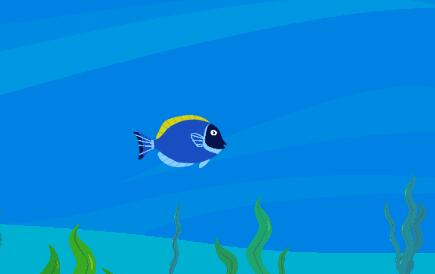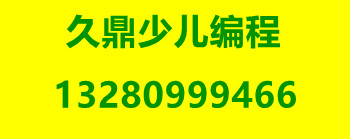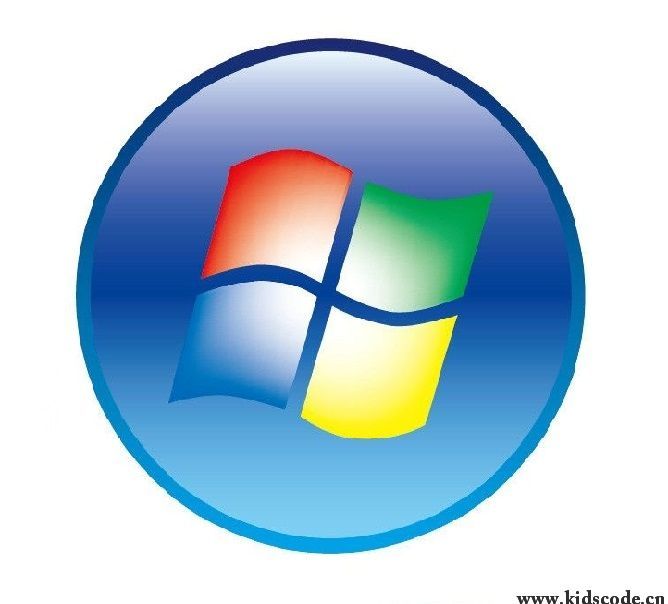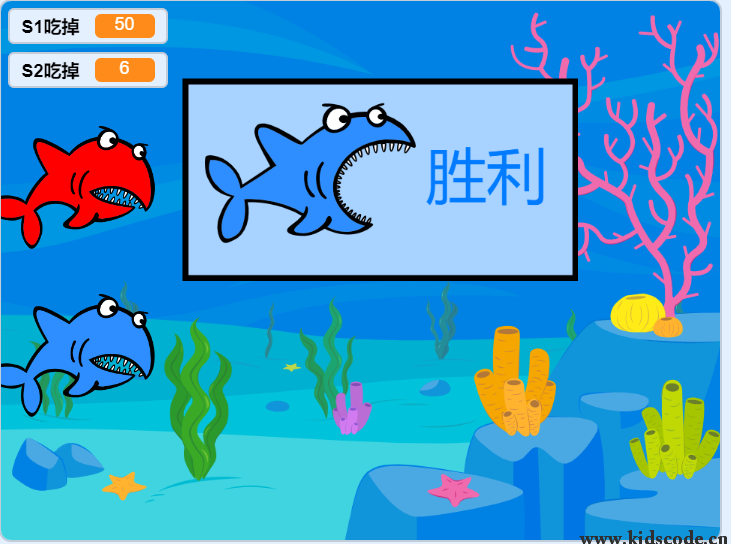
上一节中我们学习并明白了什么是向量,向量之间如何进行计算。现在已经有人为我们写好了一个可以直接使用的向量类-》在Python3.x下可用的向量类源码
将代码保存到本地,并命名为Vec2d.py
有了这个类,我们就来编写一个简单得测试程序,看看效果:
from Vec2d import *
A = Vec2d(10.0, 20.0)
B = Vec2d(30.0, 35.0)
C=Vec2d(-10, 5)
AB = A+B
print(AB.normalized())
print ("Vector AB is", AB)
print ("AB * 2 is", AB * 2)
print ("AB / 2 is", AB / 2)
print ("AB + (–10, 5) is", (AB +C))
'''
运行结果:
Vector AB is Vec2d(40.0, 55.0)
AB * 2 is Vec2d(80.0, 110.0)
AB / 2 is Vec2d(20.0, 27.5)
AB + (–10, 5) is Vec2d(30.0, 60.0)
'''
那么向量道底有什么用,我们来看一个实战的例子,这个程序实现的效果是鱼不停的在鼠标周围游动,若即若离,在没有到达鼠标时,加速运动,超过以后则减速。因而鱼会在鼠标附近晃动。
background_image_filename = './img/Underwater.png'
sprite_image_filename = './img/fish-b.png'
import pygame
from pygame.locals import *
from sys import exit
from Vec2d import *
pygame.init()
screen = pygame.display.set_mode((640, 480), 0, 32)
background = pygame.image.load(background_image_filename).convert()
sprite = pygame.image.load(sprite_image_filename).convert_alpha()
clock = pygame.time.Clock()
position = Vec2d(100.0, 100.0)
heading = Vec2d(0,0)
while True:
for event in pygame.event.get():
if event.type == QUIT:
exit()
screen.blit(background, (0,0))
screen.blit(sprite, position)
time_passed = clock.tick()
time_passed_seconds = time_passed / 1000.0
# 参数前面加*意味着把列表或元组展开
destination = Vec2d( *pygame.mouse.get_pos() ) - Vec2d( *sprite.get_size() )/2
# 计算鱼儿当前位置到鼠标位置的向量
vector_to_mouse = destination - position
# 向量规格化
vector_to_mouse.normalized()
# 这个heading可以看做是鱼的速度,但是由于这样的运算,鱼的速度就不断改变了
# 在没有到达鼠标时,加速运动,超过以后则减速。因而鱼会在鼠标附近晃动。
heading = heading + (vector_to_mouse * 0.001)
position += heading * time_passed_seconds
pygame.display.update()
虽然这个例子里的计算有些让人看不明白,但是很明显heading的计算是关键,如此复杂的运动,使用向量居然两句话就搞定了。
本站内容未经许可,禁止任何网站及个人进行转载。







